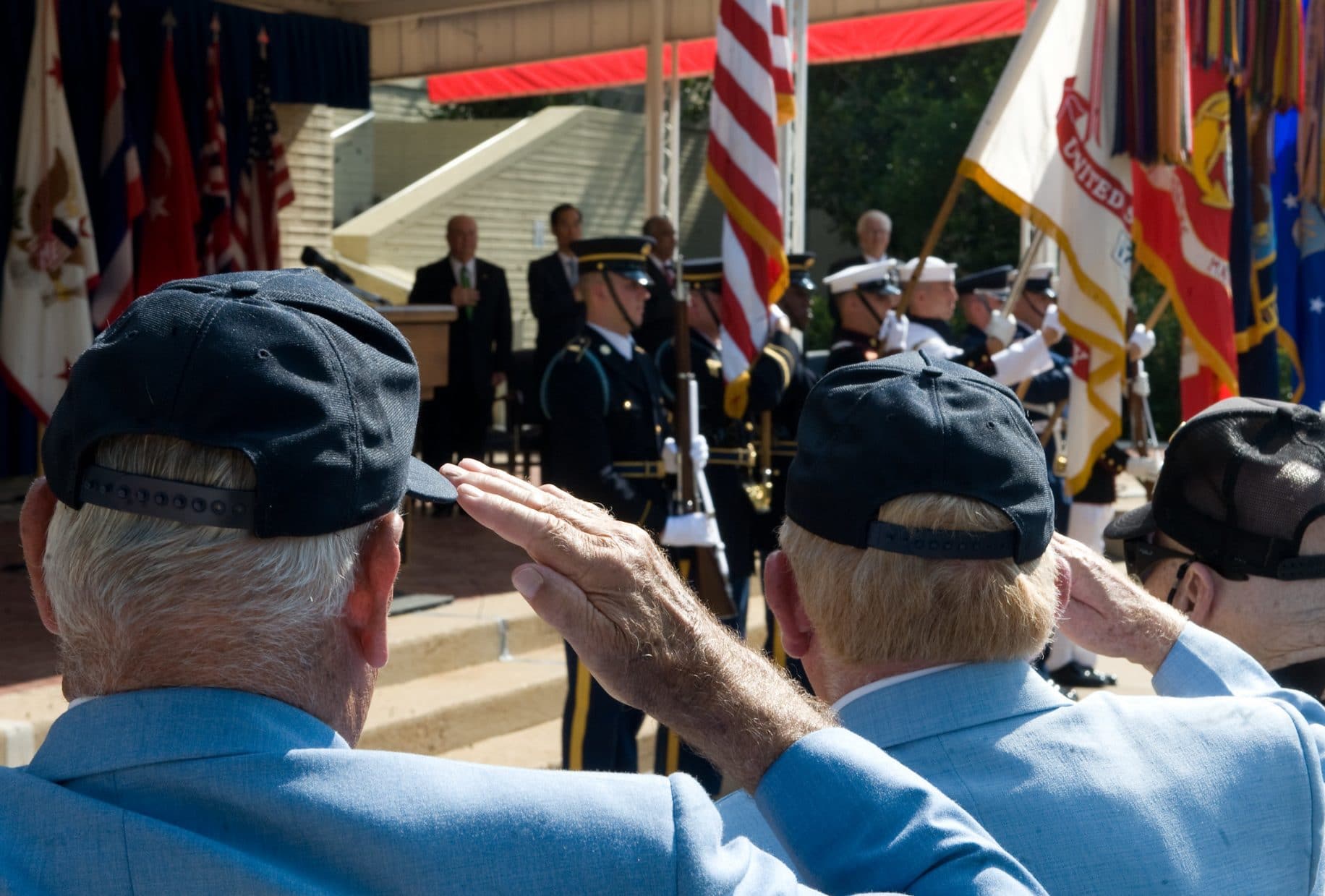
/89614455-56a9b2d95f9b58b7d0fe2ca6.jpg)
The reason that the palm faces in is because sailors hands were covered in tar from the sheets and rigging and it was considered unseemly to show an officer or a member of the Royal family a dirty palm. A Royal Navy rating from the naval base in Devonport, Plymouth, demonstrates how to salute in the style of the Royal Navy. This was done by knuckling the forehead and later evolved into the modern Navy salute with the hand at 45 degrees palm facing in. During the age of sail, ships' officers were always worried about mutiny and it therefore became custom that whenever an officer approached, the rating would prove that he was not armed. Queen Victoria instituted the hand salute in the Navy to replace uncovering when she sent for certain officers and men to Osborne House to thank them for rendering help to a distressed German ship, and did not like to see men in uniform without headress. In a book called New Art of War, printed in 1740, it is stated that When the King or Captain General is being saluted each Officer is to time his salute so as to pull off his hat when the person he salutes is almost opposite him. MAKE SURE TO CHECK OUT OUR PERSONALIZED CUSTOM ENGRAVED COINS, COIN HOLDERS AND CASES.Originally subordinates would remove their headgear to a superior. SHOP FOR MODERN AND MILITARY COMMEMORATIVE DOLLARS Those in uniform salute during the playing of the National Anthem, they may render a salute to honor a Medal of Honor awardee when they wear the medal, and uniformed service members salute at military funerals and related ceremonies. SHOP FOR AMERICAN SILVER EAGLES NEW! Personalized coins! It is customary for an enlisted person to salute an officer, it’s customary for all ranks to salute the flag or the President of the United States, who acts as the Commander-in-Chief and thereby earns the salute as the leader of the entire U.S. Honor your enlisted mentor and the First Salute tradition by presenting a Real Silver Dollar.

Some of the most often used coins for this tradition are Morgan and Peace Dollars, the American Silver Eagle, Eisenhower Dollars (40% Silver variant) and Modern Commemorative Dollars.

#Navy salute manual
The salute is intended to be a dignified military greeting, not a test of manual dexterity. The position of honor has always been to the right. The silver in a true silver dollar really represents the fidelity to a standard and this coin will be a store of value both in the memory it makes, its intrinsic value as a precious metal, and its part in American history. naval custom of lowering sails upon the death of a crewmember to indicate that things were not shipshape. This coin should represent the deep-felt gratitude for the mentor ship and lessons imparted by the Non Commissioned Officer on his Lieutenant before he sends him out into the world to embark in the brotherhood and profession of arms. A twist on the thinking for the silver dollar salute is that the new officer must buy his first salute as he has not yet by the nature of his deed alone, earned it! To new officers it may represent the respect found in ones newly earned rank and position.

While the coin may be just one dollar in denomination, it represents a value far greater. This relationship is thought to be the basis for this tradition.īy tradition, a dollar coin is the only coin given in exchange for the first salute. While the adviser's pay was eventually discontinued, the responsibility for mentoring the newly commissioned officer continued. Lieutenants compensated their enlisted adviser with a small amount of money.Īmerican Second Lieutenants in the early 1800's, received about $25 monthly as base pay, a rations allowance of about $3, and an additional allowance of $1 for their enlisted adviser. New officers were assigned an enlisted adviser who showed them the ropes, taught them the regimental history as well as the ins and outs of the military profession. The salute with the left hand was abolished in the navy in the year 1923, so as to bring our customs into line with our allies and also to conform to the. As the story goes, some of their traditions and customs were passed on to newly formed American units. Of course at the time it would not have been a "dollar" as we know it. While no one knows for sure where this tradition originated, some suggest that it was passed on from British regiments garrisoned in the US during the colonial era. The first salute is a old tradition for all US Service Branches in which newly commissioned officers give a silver dollar to the person from whom they receive the very first salute of their career.


 0 kommentar(er)
0 kommentar(er)
